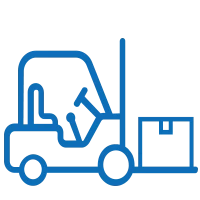Background
Goya Foods Case Study
 Founded in 1936, Goya Foods is now the largest Hispanic-owned food company in the United States, with over $1 billion in annual sales.The company began a 10-year strategic plan in 2005, investing $500 million in expansion to reach new customers and strengthen the Goya brand worldwide. Optimizing its distribution network was a critical piece of this initiative.
Founded in 1936, Goya Foods is now the largest Hispanic-owned food company in the United States, with over $1 billion in annual sales.The company began a 10-year strategic plan in 2005, investing $500 million in expansion to reach new customers and strengthen the Goya brand worldwide. Optimizing its distribution network was a critical piece of this initiative.
Challenge
In an effort to accommodate decades worth of previous and anticipated growth, Goya Foods built a 643,000-square-foot facility in Jersey City, New Jersey that would serve as a model for the rest of its distribution network and consolidate the operations of two distribution facilities into one.
Solution
Modifying the racking would have been prohibitively expensive, so Jerry Russo, Goya’s long-time account manager for Barclay, worked closely with Quinones to develop the right lift truck modifications. The pair spent several weeks at the new facility and traveled to other Goya locations to evaluate both the physical challenges and workflow considerations to determine the specifications.
Their first concern was addressing the drive-in racking’s low clearance. If sit-down trucks cannot enter, operators must leave pallets in a staging area and another operator with a different type of truck must come to put away the pallet. This adds an additional, inefficient touch point that slows down cycle times. "One of our most important goals in developing the Goya-spec truck was to reduce the amount of extra touches required to move inventory," says Quinones. "We wanted a single truck capable of completing the whole cycle, from receiving to put away, to eliminate that extra step."
Ultimately, the pair created the Goya-spec lift truck – a Yale® ERC050VG electric counterbalanced model, customized to remove the fender over the front wheels, add larger tires and use a custom overhead guard. The guard design features a curvature and camber on the sides that allow the truck to fit through the drive in racks, while maintaining the necessary operator protection – producing a single lift truck with end-to-end capability.
Yale also modified reach trucks to address the challenge of outriggers hitting the base of the rack. This issue prevented operators from moving close to target storage locations, threatening their ability to reach into double-deep storage depths. So Yale started by extending the reach, with adjustments to cylinders and reach mechanisms, and then added laser positioning and a camera system to help operators more precisely position loads at great heights.
Impact
The Yale lift trucks with custom modifications enabled Goya to translate the potential of its new facility into reality. Taking advantage of the entire cubic volume of the larger space and reducing touches from receiving to putaway allows the facility to move more cases – 60,000 to 90,000 per night – more efficiently than ever.
According to Unanue, using the double-deep rack improved the operation’s overall workflow, boosted productivity and even helped promote a safer work environment. "We were able to take lift trucks out of the high traffic areas and create a safer work environment because we now pick from the front but replenish from the back of the rack."
With those results, the Goya spec truck and Jersey City warehouse layout became the new standard across the company’s distribution network. Quinones credits the strength of the dealer-customer relationship as a critical piece to the success of the new warehouse.
"Whenever we had a new challenge, I could always work through it and find a solution with Barclay," says Quinones. "They spent months studying how we utilize the trucks and our storage infrastructure, which laid the foundation for all of our efforts. This relationship is successful because we understand each other's needs."


